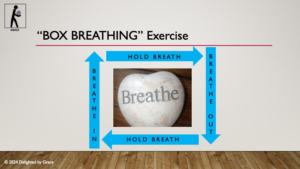Why Can’t I Talk Myself Out of My Anxiety?
Greensboro Grief and Trauma Counseling
You’ve probably had moments when your heart starts beating faster and your breathing gets more rapid and shallow leading you to feel anxious. Have you ever tried to tell yourself, “This is so silly! There’s nothing to be afraid of or worry about.”? You know that conversation you start having in your head to try to get your body to calm itself.
Well, if that’s you, you know that trying to talk yourself down from anxiety doesn’t work. Why? Because the part of the brain (the amygdala) that’s responsible for feelings of anxiety needs experiences, not words. The brain works with associations. For example, if you were listening to a song when you got some good news, when you hear that song, you tend to have positive feelings because your brain associates that song with positive feelings. The opposite it also true.
How the Brain Works
Your brain is constantly taking in information even when you aren’t aware of it. And sometimes, your brain takes in information that alerts your amygdala to cut off your thinking ability because it thinks that you are in some kind of danger. Your brain doesn’t want you to stop and think, it wants to keep you safe and get you moving to safety! Here’s a great explanation of what happens when our amygdala gets activated. You can watch it here.
Once your prefrontal cortex goes offline, you must access your brain by speaking the language of the amygdala, which is experience. When in counseling, you may wonder why in the world your therapist is teaching you about deep breathing or guided imagery because all you really care about is feeling better!
The reason your therapist teaches you these things is because that’s the first step in getting the thinking part of your brain to come back online.
Things You Can Do to Help
Here are some things you can try to activate the calming part of your brain:
- Box Breathing – breathe in through your nose to the count of four; hold it for four counts, blow it out through pursed lips (like you are blowing through a straw); and hold for four more counts. We call this box breathing because you can trace each side of a box while you are breathing. It looks something like this:

- Try some guided imagery. If you are a person of faith, you can use Psalm 23:1-3. Begin by focusing on being beside the stream. Allow yourself to enjoy the beauty of it and take it all in using your senses. What do you see? What do you smell? What do you hear? What does the terrain feel like? Move your focus to the flowing stream. Notice the leaves that fall into the water every now and then. Perhaps there are some leaves nearby that you could put that stressor onto and gently place it in the water, watching it float away. Notice what it feels like to have that stress leave you. How does your body feel differently without it? Enjoy this exercise for about 10 minutes.
- Use the 5-4-3-2-1 grounding exercise. Name 5 things you can see, 4 things you can touch, 3 things you can hear, 2 things you can smell, and 1 thing you can taste. If you can’t smell or taste anything, imagine your favorite smells and the taste of your favorite food. This helps to focus your mind on something other than your worries after you have done one of the two exercises listed above. When you finish, move on to something new.
The next time you feel your anxiety rising, stop what you are doing. Begin with deep breathing or guided imagery and then begin to refocus your mind and come into the present moment by using the 5-4-3-2-1 exercise. If you would like a guide to help you with your anxiety, feel to download 3 Tips to Help Reduce Feelings of Anxiety here.
Change is Possible
The good news is that once you become self-aware of what your brain is doing, you can begin to retrain your brain by building new neural pathways that help to get you back to a place of feeling safe and connected. But one thing you can’t do is to continue to do what you’ve always done. If you do, you’ll keep getting what you’ve always gotten. It takes practice to retrain your brain. Don’t give up! Science has proven that through neuroplasticity, change is possible! If you find you need more help and accountability, reach out to a licensed mental health professional or talk with your doctor as these steps are not a substitute for professional services.


